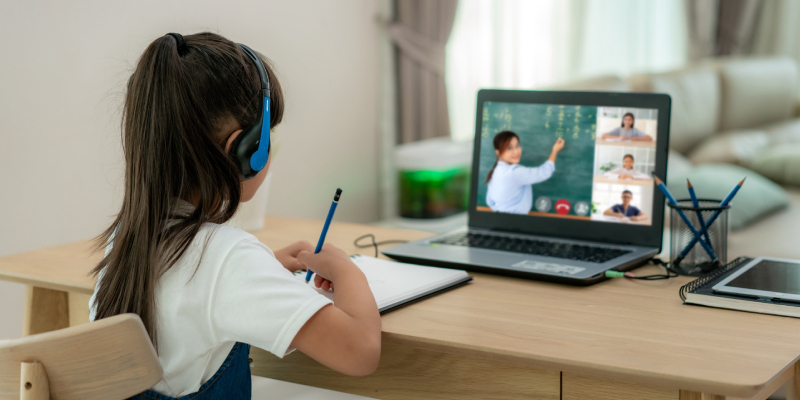How Is Technology Transforming Learning In The COVID Era?

Education technology is re-imagined as students continue their education independently with the COVID 19 pandemic. The coronavirus has disrupted our students’ educational journey, but thousands of innovations can assist them in continuing on their path. Some believe that the rapid transition to online learning will result in a poor user experience. Still, others believe that a new hybrid education model will emerge, with significant benefits for students and educators alike.
Higher education and university students had access to advanced and interactive curricula online for at least a decade, and therefore they are an exception here. Effective remote learning requires the availability of technology and its recent innovations. Technology can help students of IGCSE syllabus schools in Chennai (https://www.internationalvillage.org/) to navigate their educational and professional journeys. It can help teachers and students get through crises. However, many institutions are still lagging in their adoption of these technologies.
How Is The Educational Sector Coping With The Change?
There are nearly 300,000 students enrolled in full-time online charter schools who will be able to continue their education without interruption in the wake of the virus. Technology can help students navigate their educational and professional journeys with superior technological innovations. It can help students identify, respond, and correct errors while exposing them to deep learning. The other changes brought about in recent times because of the new mode of learning are:
- Edmentum is hosting webinars to help educators learn how to use its online learning and assessment tools to help students learn outside of the classroom.
- Artificial intelligence is being used to help students learn English as a second language in various parts of the world.
- Italy has had to step up its efforts to become a leader in educational innovation and is now requesting adaptive tutors for all of the country’s students.
- BYJU’S, a Bangalore-based educational technology and online tutoring firm, has seen a 200 per cent increase in new students since announcing free live classes.
- Since mid-February, 81 per cent of K-12 students in Wuhan attended classes via Tencent Classroom.
- Alibaba Cloud deployed 100,000 new servers in just two hours to support the influx of students.

What Is The Future Of Learning?
Businesses are expanding their capabilities to provide a one-stop-shop for teachers and students alike. One such collaboration is called Lark. Dr Amjad, a professor at The University of Jordan, uses Lark to teach his students and says that Lark has changed how he teaches. In some cases, innovative partnerships are being formed between schools and media organizations to provide students with local educational broadcasts and digital options.
Approximately 60% of college students who had previously taken an online course expressed concerns about their ability to concentrate and maintain the self-discipline required to study from home or another location. The shift to online learning may help develop a new, more effective teaching method. When looking at its brighter side, most of the best international schools in Chennai believe that it may even catalyze the development of a new and more effective teaching method soon.
According to some studies, students retain 25-60 per cent more information when they learn online than only 8-10 per cent when they learn in a traditional classroom setting. However, the effectiveness of online learning varies depending on the age group being studied. Know More
Challenges Faced With Online Learning
The Global School Lockdown caused widespread disruption in education in more than 150 countries. Many countries adopted some form of distance learning as an emergency response strategy, but these were not always successful in reaching all students. Some students in countries with reliable internet access and technology find it difficult to participate in digital learning, which is true across countries. Students face a few other challenges in their day-to-day online learning sessions, and let us see them here.
- Students adjusting to the transition to online classes require them to be well versed with technology.
- Most students are experiencing technical issues with online courses, in which professors record class sessions and provide them to the students.
- While studying from home, students face distractions and time management issues, as the family is present.
- According to experts, since students may not be attending class at a specific time on a physical campus, finding the motivation to learn becomes difficult.
- Students can use videoconferencing programs to learn labs, but online classes can be difficult for students when they need exposure to practical knowledge of the laboratory components.
Last But Not Least
Schools will reopen, and no longer will there be social distancing rules, but the effects of the COVID-19 era will continue to be felt. When students return to school, they should be encouraged to continue their experimentation and iterative learning, focusing on universal access to post-primary education. The school system is now experimenting with new ways to teach students, including requiring students to wear face masks to combat the spread of COVID-19. Finally, it is believed that many students will be able to continue their education without interruption in the wake of the virus.





